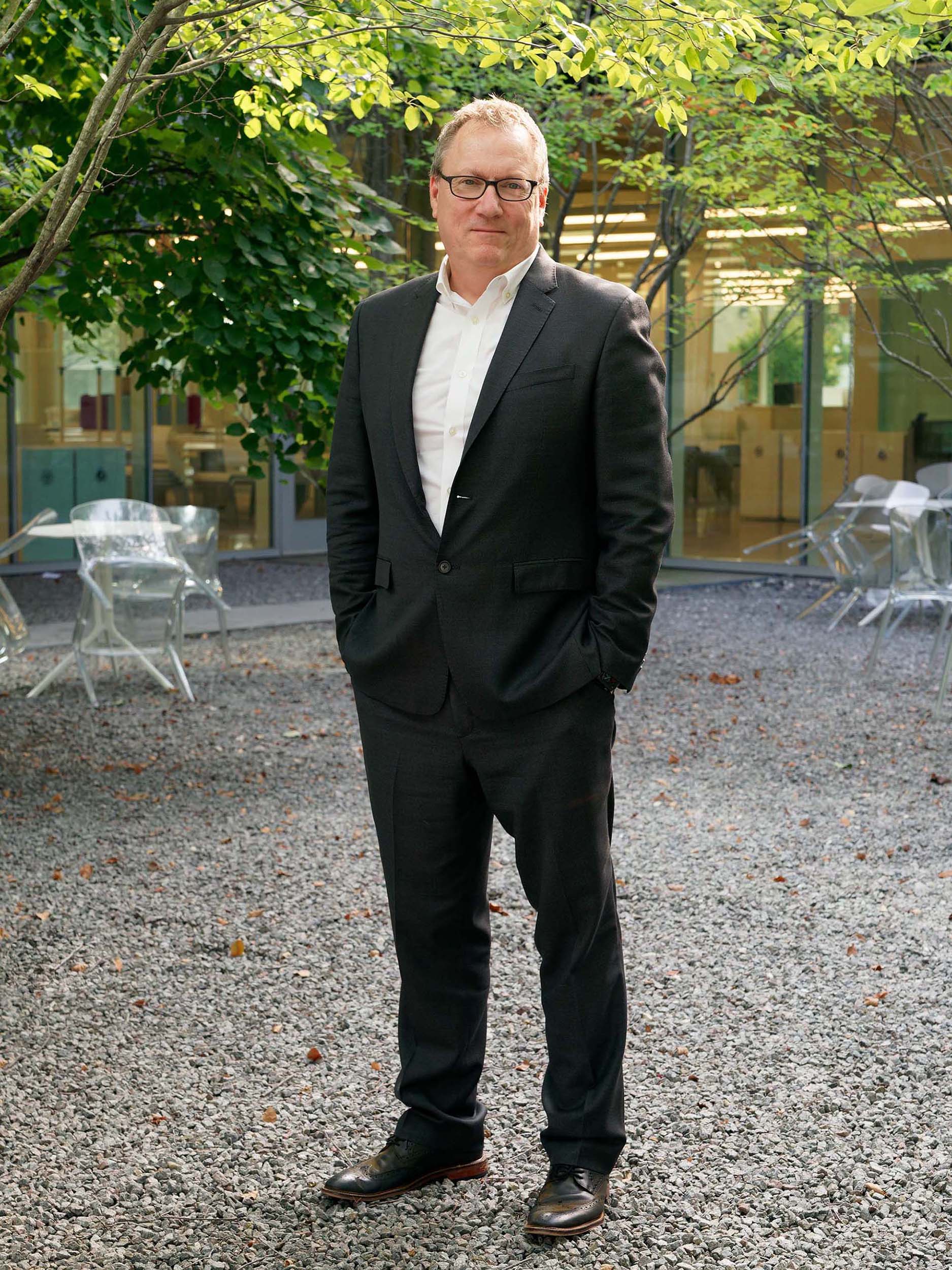Introduction
Introduction
By Mark Jones
This report draws on research conducted in 2023 by the Institute of Design. We sought to understand the state of design today in large, design-mature organizations. We interviewed 29 design leaders about the state of design in their organizations and the challenges that designers are best suited to address. Design leaders at such organizations as Meta, JP Morgan Chase, Ford, and IDEO responded.
We asked what’s going well, what difficulties they face, and where they see the most opportunity for design in the future. Similar to our “Lead with Purpose” research from 2020, we heard that even design-mature organizations struggle to leverage design in shaping their strategies.

ID Associate Professor Mark Jones
Since we conducted our interviews in 2023, the mood about the state of design has deteriorated. The corporate love affair with design is over, some claim. Design thinking doesn’t work and design strategy has failed to bring innovation to market, they argue. Meanwhile, large-scale layoffs have hit design practitioners across industries, particularly in tech, affecting some seasoned and brilliant design executives—including some of the folks we talked to for this research.
So is this all evidence that efficiency and conventional business processes have won?
Has design failed, even at our most forward-thinking organizations?
After dozens of conversations with design leaders at large, design-mature organizations, I can tell you that the answer is no. Despite the death knell sounded in some corners, design is more urgently needed than ever.
In fact, the design leaders that we spoke with saw the need for sophisticated design practice increasing in the future. These organizations and their leaders believe strongly in using design to solve tough challenges. And we have entered an age in which the challenges for organizations will be gnarlier, riskier, and harder to get right. The past few years have seen nearly all organizations become adept at managing the transition to a digital world. In many ways, we have come to a relatively steady state, where organizations have the technology in place to meet customer expectations.
But that steady state won’t last. With the evolution of AI happening now, the world is changing exponentially faster, and the risks are higher than ever. If new product launches, new services, and new systems are based purely on notions of efficiency, we will see biases, inequities, and unintended consequences mount like never before.
The design leaders we talked to emphasized that in this age of AI, we need strategic designers who can navigate complex, interconnected landscapes to ensure thoughtful and appropriate evolutions in our offerings.
So, in this report, we consider how we can take responsibility and advance design within organizations at a critical moment—when it has so much to offer humans (our customers) and the world (our systems).
We’ve distilled from our research five urgent challenges today’s organizations face and outlined recommendations for how design professionals can make organizational success possible in this fast-changing environment. In short: design leaders need to address these five urgent organizational challenges in their processes.
At ID, we are all about evolving design process. We work to instill the mentality—in our students, learners, and partners—that we are always in process. Because this mentality, in our view, is required to iterate and continually build the futures we want.
If you have a need for speed—as we found many organizations do!—see our executive summary of the five urgent challenges and what design can provide to organizations. Our major takeaways are also outlined in terms of partnerships and practice, so you can take this thinking into your everyday doing.
Mark Jones
Associate Professor of User Research and
Service Design, Institute of Design

Peter Zapf
Director of Partnerships and Strategic Initiatives
Are you interested in understanding where design is heading next? Let’s think together.